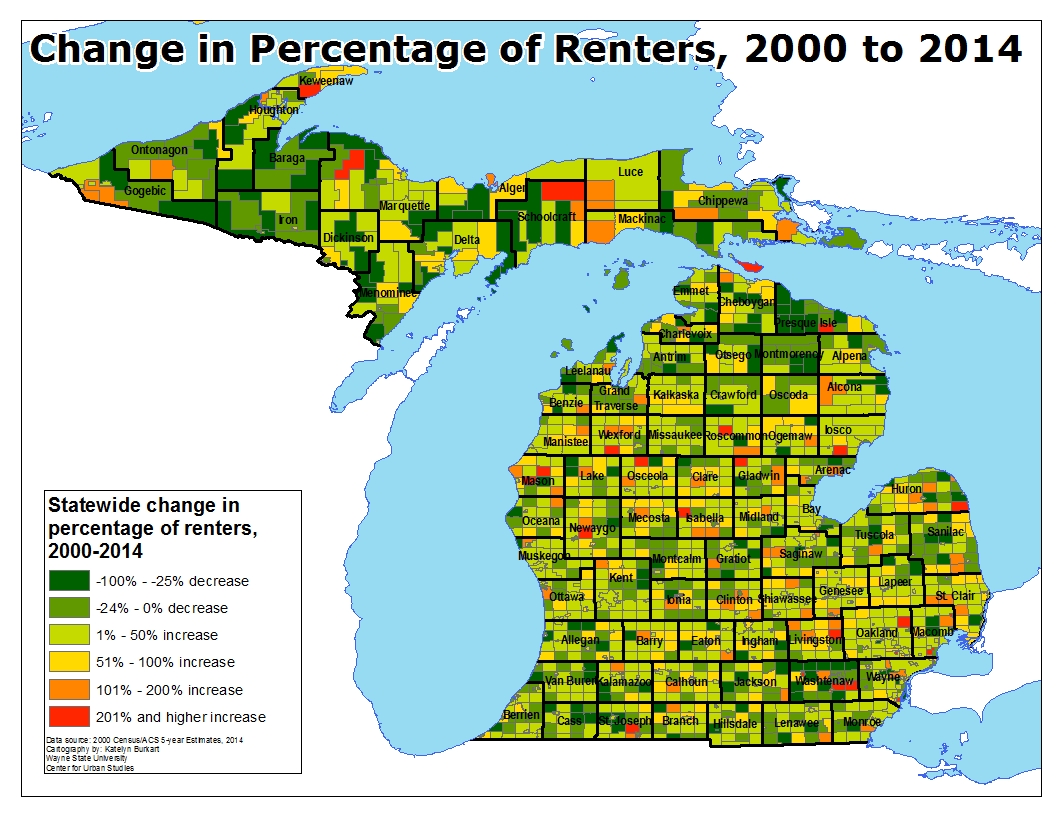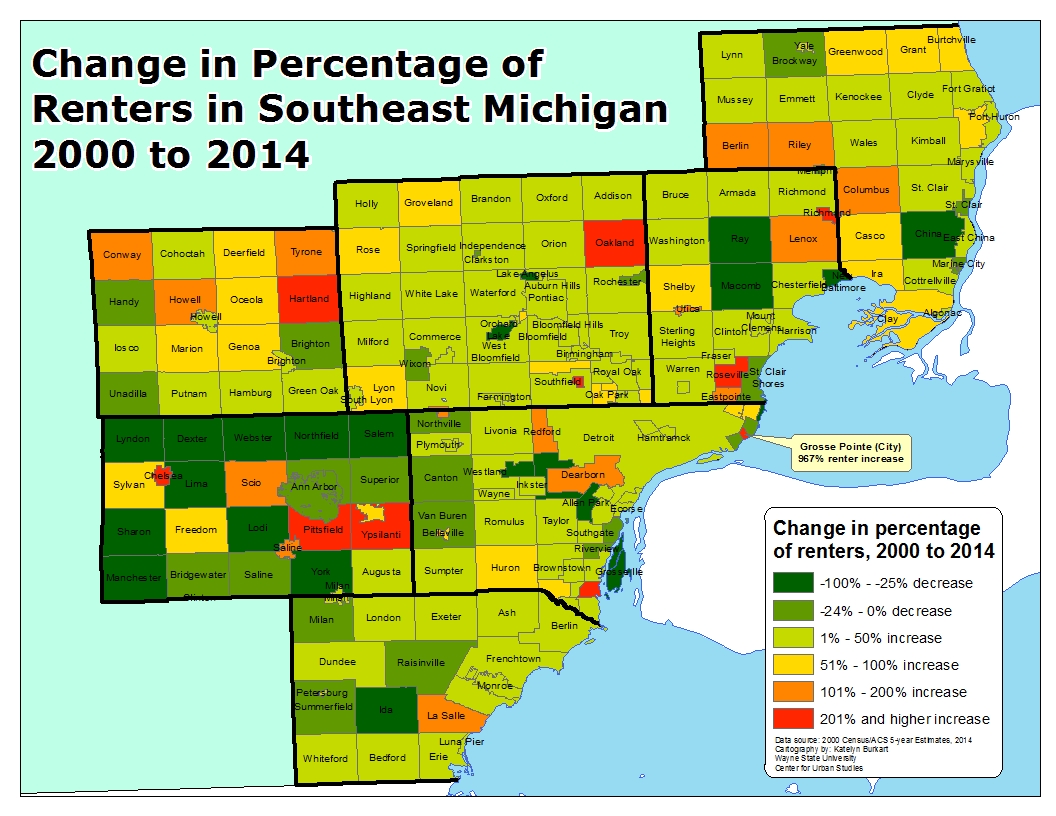Southeastern Michigan followed a trend similar to that of the entire state between 2000 and 2014 in that majority of the region experienced up to a 50 percent increase in the percentage of renters between 2000 and 2014. Statewide there were 998 communities (about 65 percent of the state) that experienced an increase in the total percentage of renters, and regionally there were 154 communities (about 70 percent of the region). Both regionally, and in the state, the city of Grosse Pointe had the highest change in percentage of renters between 2000 and 2014 at 967 percent. According the U.S. Census Bureau the city’s percentage of renters increased from 2 percent in 2000 to 19 percent in 2014.
The data for this post is from the American Community Survey (ACS) and the Census. The 2014 data is ACS and provides the total estimate of houses in the county subdivision, how many were owner-occupied and how many were renter-occupied. The margin of error ranges from 1,919 to 5 units. The 2000 data is from the Census and provides a sample of each county subdivision, along with the number of owners and renters in the sample. No margins of error were provided. For both 2000 and 2014, the percentage of renters was calculated and then used to determine the change between 2000 and 2014.
The three communities in the state, and regionally, with the highest percentage increase in renters between 2000 and 2014 were located in Southeastern Michigan. With the city of Grosse Pointe at the top, the city of Memphis in Macomb County came in second and Pittsfield Township in Washtenaw County came in third. Between 2000 and 2014 Memphis experienced a 746 percent increase in renters and Pittsfield Township experienced a 643 percent increase.
In Wayne County there were four communities where there was more than a 100 percent increase in the amount of renters between 2000 and 2014. Those communities were Grosse Pointe, Gibraltar (232%), Dearborn (118%) and Redford (115%). The city of Detroit experienced a 29 percent increase in the percent of renters in that time frame. According the Census data, the percentage of renters in Detroit in 2000 was 38 percent and in 2014 that number increased to 49 percent.
While majority of the region experienced an increase in the percentage of renters between 2000 and 2014 there were several that experienced a decrease. As shown on the map, in Southeastern Michigan many of those communities were the rural ones located in Washtenaw County. There were 15 communities in Washtenaw County that experienced a decrease in the percentage of renters; those decreases ranged from 1 percent to 87 percent. York Township experienced the 87 percent decrease, going from a 67 percent rental rate to a 9 percent rental rate in 2014.
Both regionally and across the state, Detroit had amongst the highest percentage of renters in 2014 at 49 percent. The city of Ypsilanti and Royal Oak Township both had the highest percentage of renters in the state of 68 percent. Royal Oak Township experienced a decrease in the percentage of renters between 2000 and 2014, going from 83 percent to 68 percent. The city of Ypsilanti though experienced an increase from 40 percent to 68 percent.
The fact that the percentage of renters across Southeastern Michigan and the state as a whole has increased further solidifies our previous assessment that the cost of rental units is increasing due to the demand in the number of people seeking such units. Much of this increase in demand is driven by households forced into the rental market by foreclosure. As such, former homeowners are often simply renting units that were occupied by homeowner just months before. Should the demand for rental units continue to increase as these former homeowner units (often single family dwellings) are absorbed, new construction of apartments could increase density, allowing for more units to be built. However, this option may require changes in zoning regulations and support from the local communities.

